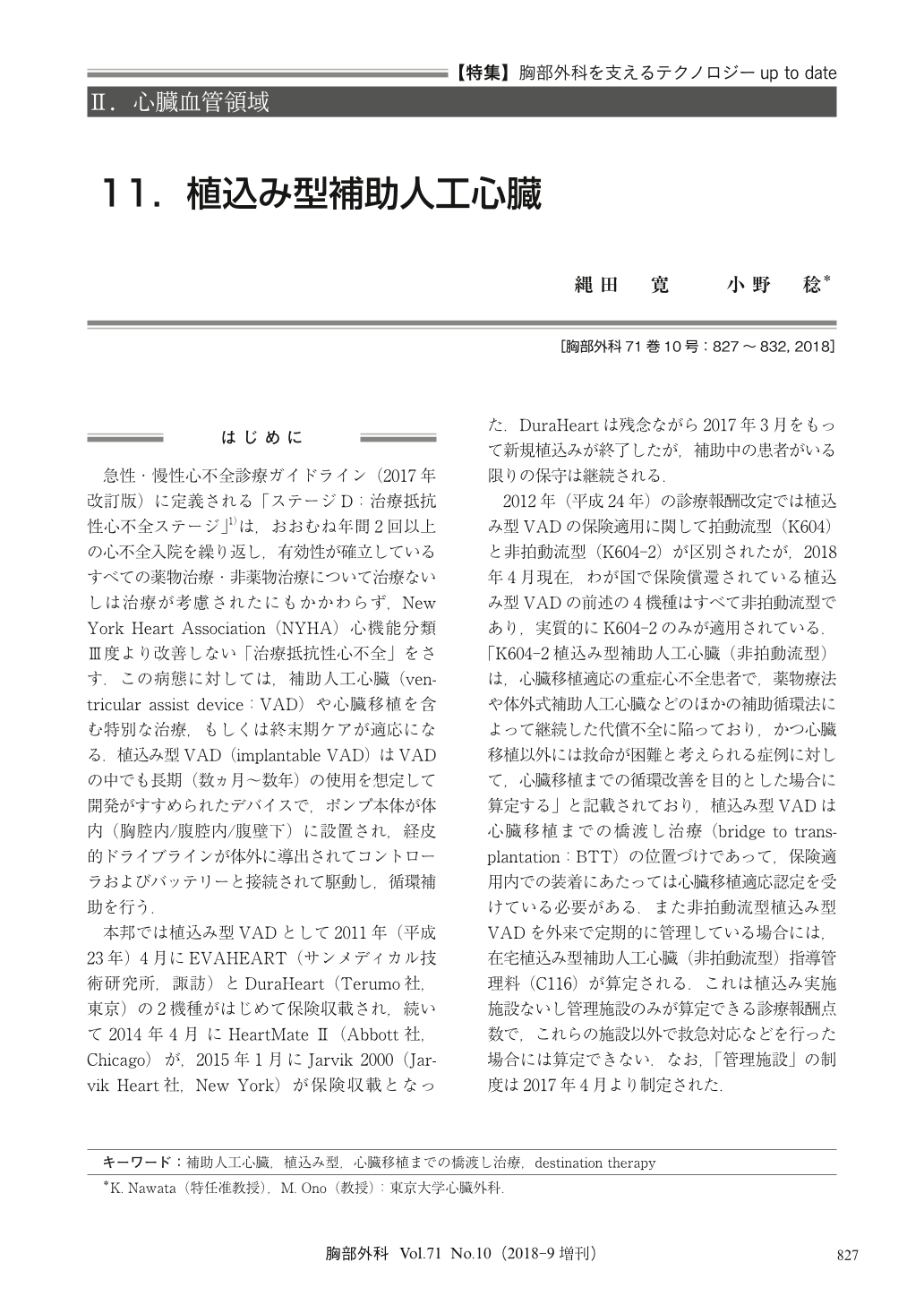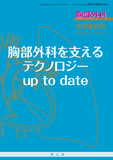Japanese
English
- 有料閲覧
- Abstract 文献概要
- 1ページ目 Look Inside
- 参考文献 Reference
急性・慢性心不全診療ガイドライン(2017年改訂版)に定義される「ステージD:治療抵抗性心不全ステージ」1)は,おおむね年間2回以上の心不全入院を繰り返し,有効性が確立しているすべての薬物治療・非薬物治療について治療ないしは治療が考慮されたにもかかわらず,New York Heart Association(NYHA)心機能分類Ⅲ度より改善しない「治療抵抗性心不全」をさす.この病態に対しては,補助人工心臓(ventricular assist device:VAD)や心臓移植を含む特別な治療,もしくは終末期ケアが適応になる.植込み型VAD(implantable VAD)はVADの中でも長期(数ヵ月~数年)の使用を想定して開発がすすめられたデバイスで,ポンプ本体が体内(胸腔内/腹腔内/腹壁下)に設置され,経皮的ドライブラインが体外に導出されてコントローラおよびバッテリーと接続されて駆動し,循環補助を行う.
For patients with “stage D refractory heart failure” as stated by the The Japanese Circulation Society (JCS) 2017/The Japanese Heart Failure Society (JHFS) 2017 Guidelines for Diagnosis and Treatment of Acute and Chronic Heart Failure, extensive therapeutic methods including implantation of ventricular assist device (VAD) and/or heart transplantation, as well as terminal care. An implantable VAD is a device designed to support patients for a long term of several years. This device has its most part buried in the body with its driveline penetrated out through the skin to connect with a controller and butteries.
In Japan, implantable VADs started to be used in 2011, and now 3 devices are available in a commercial basis, that is, EVAHEART 2, HeartMateⅡ and Jarvik 2000. They are available when a patient has been listed as a candidate for heart transplantation, and recently the usage of implantable VAD as destination therapy that is applied for patients who are not eligible for heart transplantation but would get benefit from circulatory support, enough to be free from hospital-bound status and enjoy high quality of life. If this device can prove to improve heart failure patients’ symptoms, resulting in decreasing medical expense, surely it would be widely accepted as a promising therapy to treat heart failure.

© Nankodo Co., Ltd., 2018


